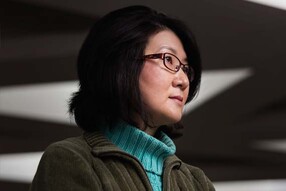During January 2014, the GSAS workshop ComSciCon Local helped young researchers learn how to communicate complex and technical ideas in a way that makes them vivid and comprehensible to a broad audience. Organized by Communicating Science, an organization founded and run by PhD students from Harvard and MIT, the workshop culminated with students preparing brief articles that answered the question, “What surprising role will your field take in explaining, shaping, or solving a problem faced by society this century?” Below is one student’s response. This is part four of a four-part series.
An Analytic Approach to Risk and Intervention
On a bright, sunny morning, the editor-in-chief of the scientific journal Advances in Nanoparticles was killed on her way to work by a reckless driver. The tragic crossing of their paths proves a common point: every day, we are exposed to various types of risk—from accident or disease, from crime or the environment. Our vulnerability to risk is ever-present in our increasingly volatile world.
Do we simply wait for our fate to befall us? The increasing availability of “big data”—massive, complex volumes of data generated from genomics, from electronic medical records, and from social media, among other sources—has provided us with a golden opportunity to harvest useful information, reduce risk, and develop targeted treatment or intervention for undesirable outcomes. With the many resources spent in drug development, how can we identify the right group of patients for more effective treatment? With limited government resources, how can we efficiently help children at risk of abuse? With our modern transportation infrastructure, how can we reduce the number of people killed and injured in traffic crashes each year—a number that would fill Fenway Park 60 times over?
Led by Professor Lee-Jen Wei, my dissertation research aims at developing quantitative methods in personalized medicine. Combining advanced mathematical, statistical, and computational methods, we propose systematic procedures to build and evaluate risk-scoring systems according to how well they predict in an independent population.
We then optimally separate subjects into distinctive groups with a clinically meaningful risk difference between them. For example, four groups of patients with different characteristics may be identified with an average of six-month survival difference between neighboring risk groups. When employed in collaboration with subject-matter experts, such novel methods to stratify individuals can help practitioners develop a more personalized intervention strategy for people in each distinct risk group.
The data analytics team for the 2012 presidential election used uplift modeling to identify likely voters early on for fundraising and voter-mobilization efforts. In a similar spirit, early identification of sub-populations who are (or are not) likely to experience a treatment benefit can potentially save lives and resources, while alleviating adverse treatment effects. Our proposed concepts and procedures, now in active research, could be adapted in vast areas of application, ranging from identifying people with high risk of life-threatening disease to finding those who are at high risk of endangering themselves or other people. Intervention or therapeutic treatment programs can then be developed via multidisciplinary collaborations.
Imagine if that reckless driver had been identified earlier and had undergone anger management. Imagine if his smartphone or car had signaled his outrageous speed and controlled it. The scientist who died on that sunny morning—my beloved sister Virginia—might still be alive. The development of innovative analytic methods presents an exciting opportunity to avert crises across a range of areas. By harnessing the passion and prowess of subject-matter experts, and our ever-growing bank of available data, we can develop targeted and cost-effective strategies to deter harm and create a safer and healthier environment for all.
Florence Yong is a fourth-year PhD candidate in biostatistics.
Photo by Ben Gebo


